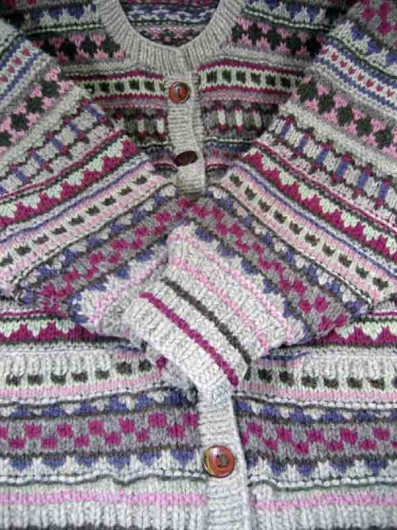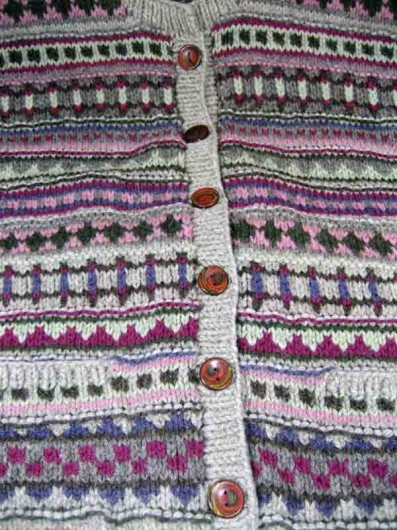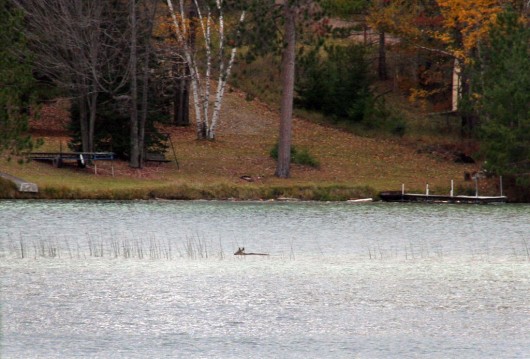This is the Wonderful Wallaby. Carol A. Anderson, of Cottage Creations, designed it and knitters galore have knitted it. The pattern booklet is Cottage Creations W03, not available as a download. It is well worth the effort to locate it at your local yarn shop or favorite internet shop.
Nearly 3000 Ravelers have posted finished projects on their project page. When Ravelers take to patterns in droves, you can trust it’s a keeper.
Mine is knitted in left-overs from another Cottage Creations project: a full sized Rambling Rows afghan. I ran out of oddments and ended up leaving the hood off and knitted a garter stitch collar instead. It’s a cozy sweater, with a built-in handwarmer. When you buy the booklet you will have the pattern for a Wallaby in almost all the sizes people come in, from size 2 Toddler to 48″ chest. Try the Wonderful Wallaby when you have time. Bet you can’t make just one!







